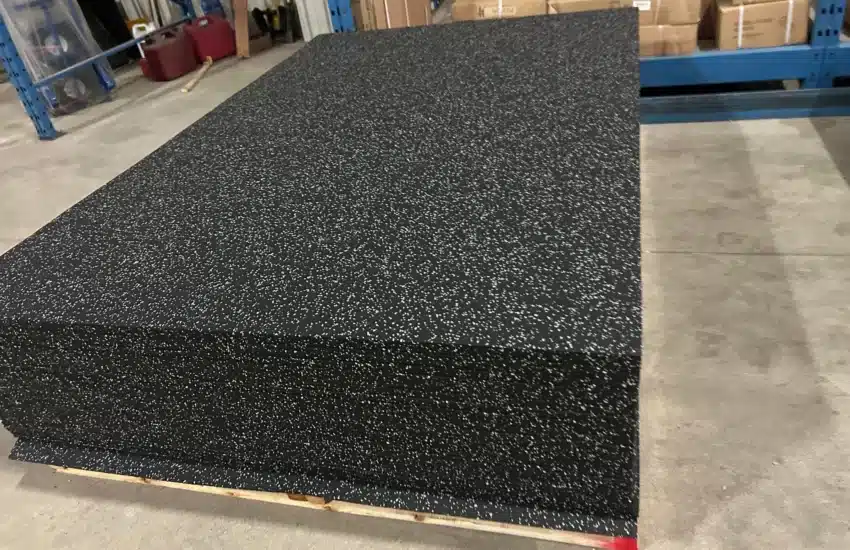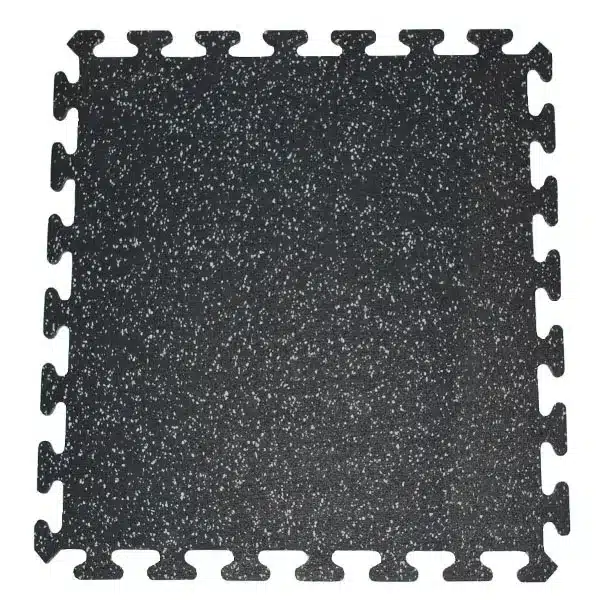In our series of articles about fitness gear you can use for muscle and strength building at home, we decided to cover one of the essential questions. Every home gym usually starts with rubber flooring. Rubber mats protect your floor from damage from exercise weights; they also protect your fitness equipment, reduce noise, and make your home gym look sleek and professional.
Since the selection of products available on the market is huge, we decided to talk to the experts and find out some necessary information. We talked to Pavlo, who is the owner of a fitness equipment store in Canada called My Sports Shop. His store supplies athletes in Montreal, Ottawa, Kingston, and other towns and cities in Ontario and Quebec with fitness and boxing equipment.
Pavlo, is rubber flooring essential for the home gym?
In the most basic form of the home gym, rubber flooring is not necessary. If you have only a pull-up bar or a bench with a pair of dumbbells, you can put it on a rug and it will do. However, when you start adding equipment, such as a weightlifting rack or a treadmill, it makes sense to protect your floor from damage.
How do you choose the rubber flooring? What are the differences between different mats?
First of all, you need to decide on the thickness of the mats you need. If you don’t plan to lift and drop heavy-loaded barbells, you can opt for 8-mm (5/16-inch) rubber mats, which are very popular. You can go even lower and choose 6mm (1/4 inch) mats. However, if you plan to perform Olympic weightlifting or other disciplines that require heavy weights, it’s better to choose 1/2-inch rubber mats that absorb the impact better and distribute it over a wider area. These mats also isolate noise better, which can be important, for example, in an apartment building. Some athletes choose even thicker mats, 3/4 inch, and more. Those are required for the most heavy-duty use and for additional protection.
You may also read about Liteboxer Fitness Bundle Reviews: What Is It | Pros & Cons!
Other than the thickness, what are the other differences?
Mats also come in different sizes. The most popular kind is the 4×6 rubber mat. They are easy to transport and install. Another popular option is 2×2 interlocking rubber tiles.
You can also get rubber flooring in rolls, which better fits commercial applications, as rolls are hard to transport and install. Mats also differ by design. If you build your home gym in a garage or a basement, you most likely wouldn’t mind plain black mats. However, many people need to put some gym equipment in the office or in the living room. Here, some other designs can be handy, such as black mats with speckles of different colors.
They make the space look great, and they also help hide any possible dust or debris so that you don’t have to clean it too often.
What should we pay attention to when choosing rubber mats?
I have seen many different products before I’ve chosen the ones I like the most for our store, and I can confirm not all rubber mats are the same. Pay attention to the quality of the material. It should be dense and firm. Some mats can break and fall apart; this happens when an incorrect rubber compound is used by the manufacturer. Also, pay attention to the smell. Some mats will always smell, and it can be a problem. Pay attention to the reputation of the seller to avoid any issues. Depending on the material, some mats we sell don’t smell at all; others need a couple of weeks to gas out; that’s the period when you need to ventilate your gym area well, or even leave them for a couple of weeks somewhere where the smell is not an issue. This is normal for some rubber products.


